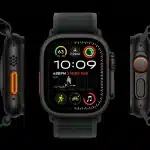Apple has revealed a new approach to training humanoid robots, called PH2D—short for “Physical Human-Humanoid Data.” This method combines input from both human instructors and robot demonstrations to teach machines physical tasks.
Unlike traditional robot-only training, PH2D mixes human movements and robot data. This hybrid process helps robots learn faster, especially when performing actions like picking up objects or pouring liquids.

AR Headsets Capture Human Movement
To collect training data, Apple used headsets like the Vision Pro and Meta Quest. A single camera on the Vision Pro and stereo cameras on the Quest recorded 3D movements.
Human instructors wore the devices while performing simple tasks. Apple slowed down the captured footage to make training more accurate. This helped robots better understand and copy the motions.
The system uses a model called HAT (Human-Humanoid Action Transformer). HAT can process both robot and human inputs, improving how robots generalize actions across different situations.
Future Uses and Consumer Potential
While Apple hasn’t announced a robot product yet, the research supports earlier experiments—like its robotic desk lamp prototype. Reports suggest Apple is exploring mobile robots that could help with household chores.
This training method may help Apple launch cost-effective, smart robots in the future. It shows that using everyday hardware and smart models can reduce development costs while still boosting performance.
Smarter Robots Through Simpler Tools
Apple’s PH2D method highlights how human demonstrations can make robot training more practical. By combining motion capture with machine learning, Apple is paving the way for more helpful and capable robots.
As tech advances, approaches like this may shape the future of home robotics—making machines that work better with people, not just for them.












